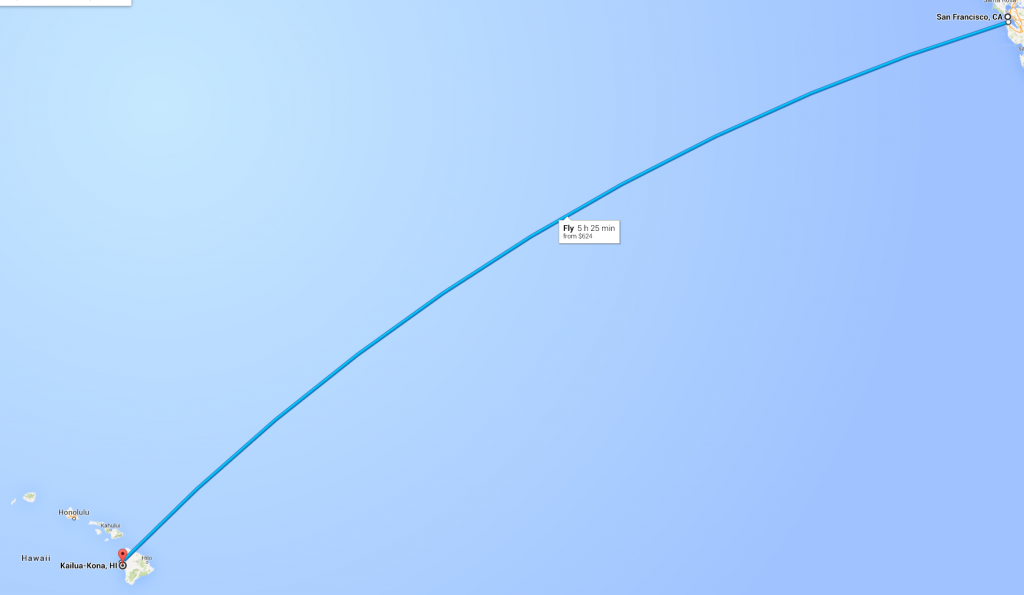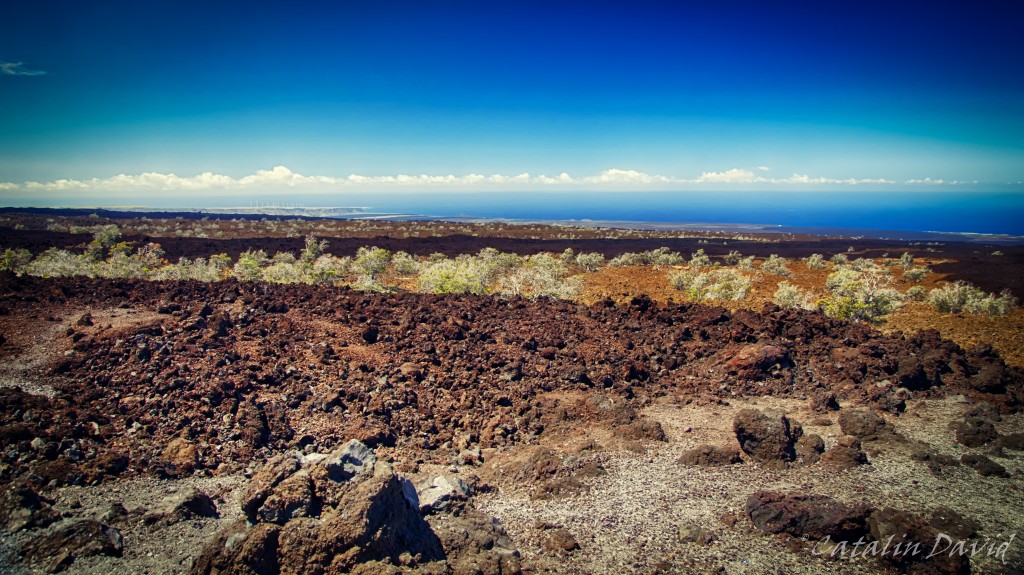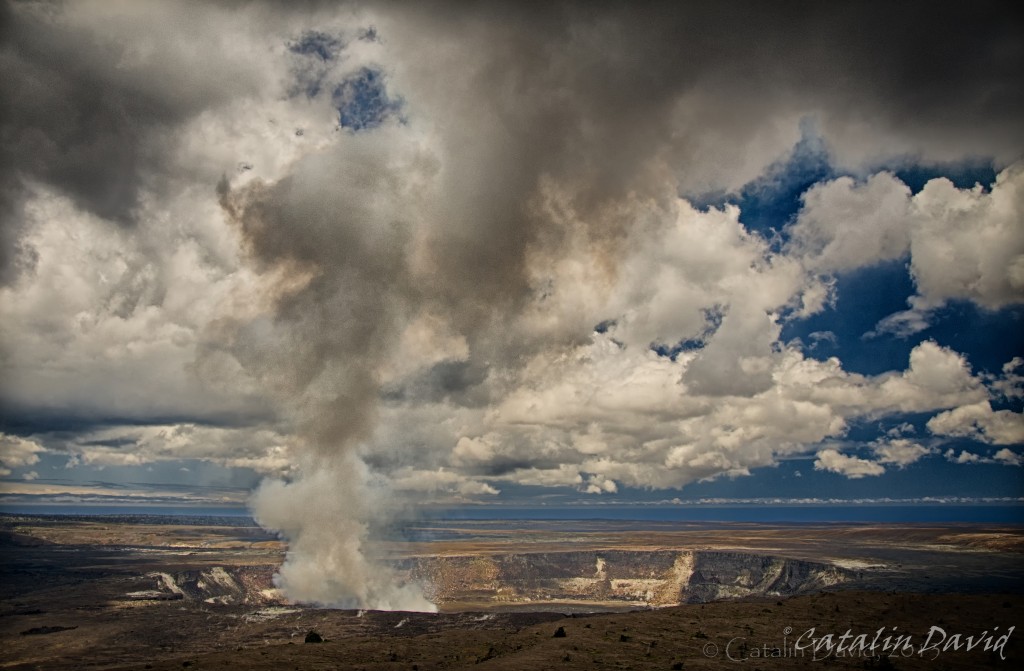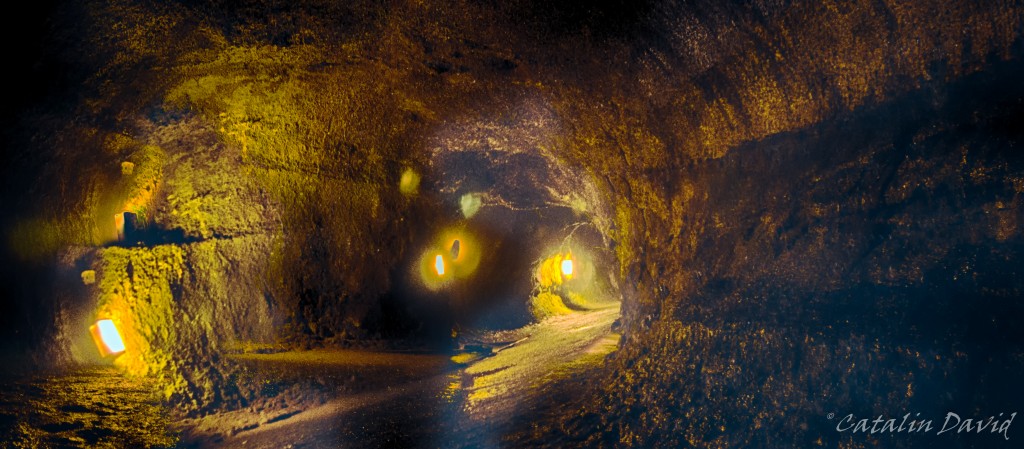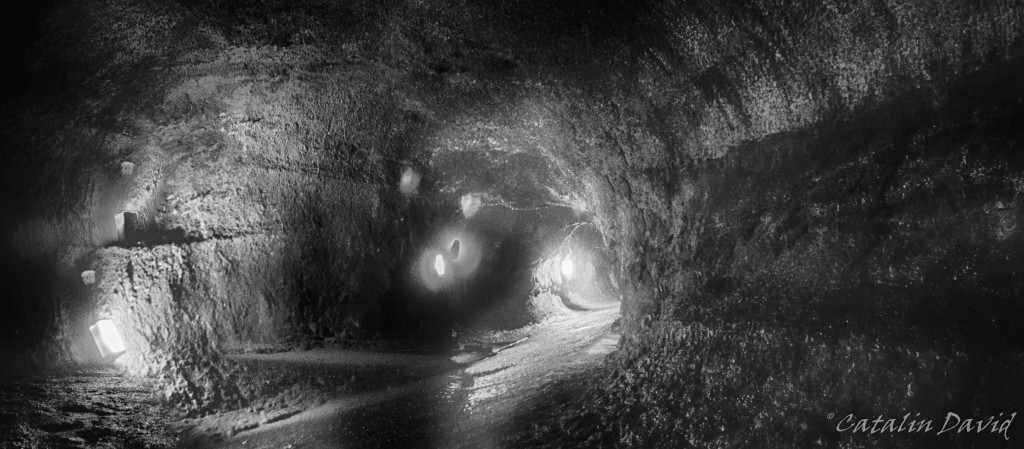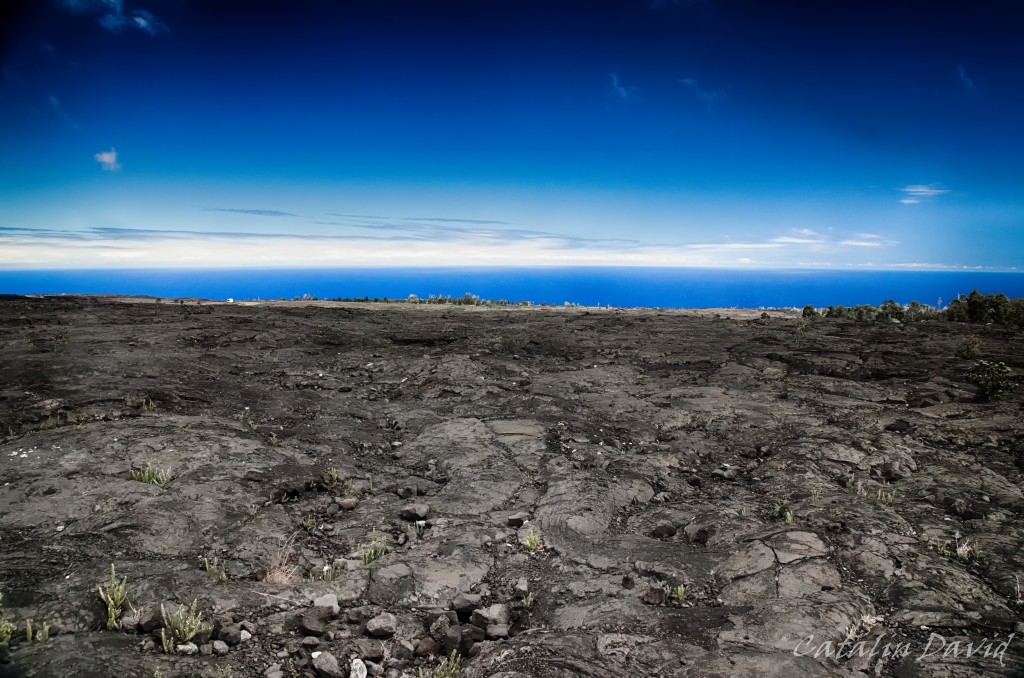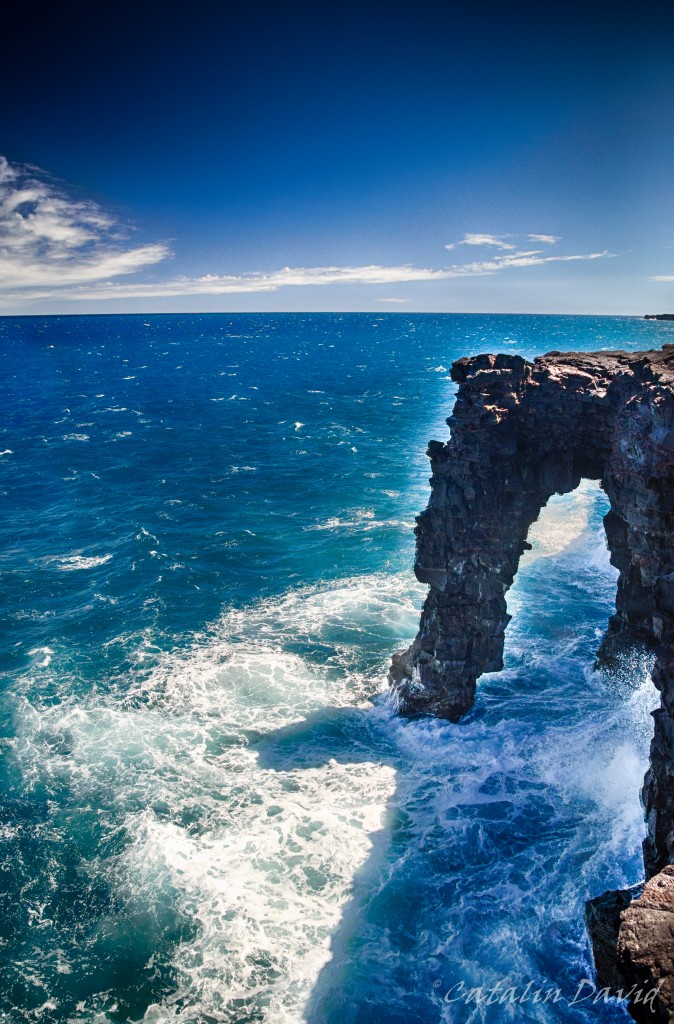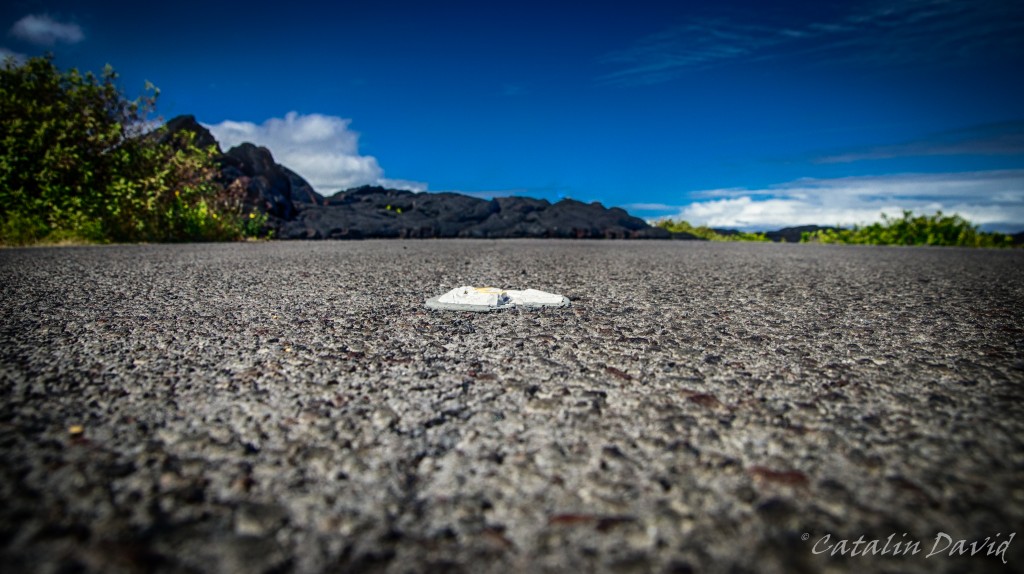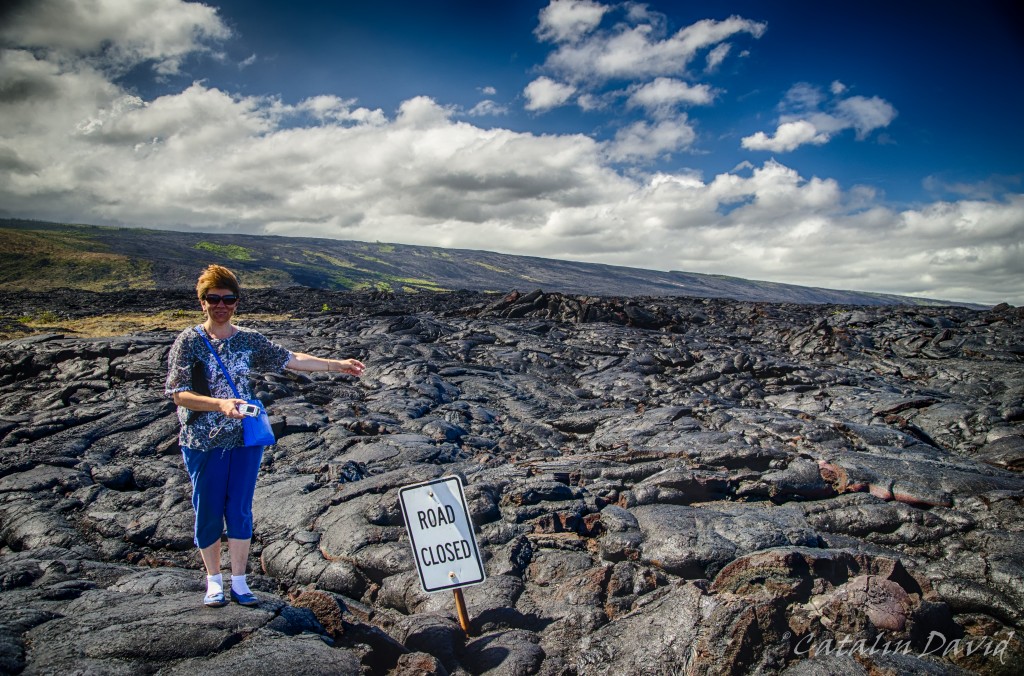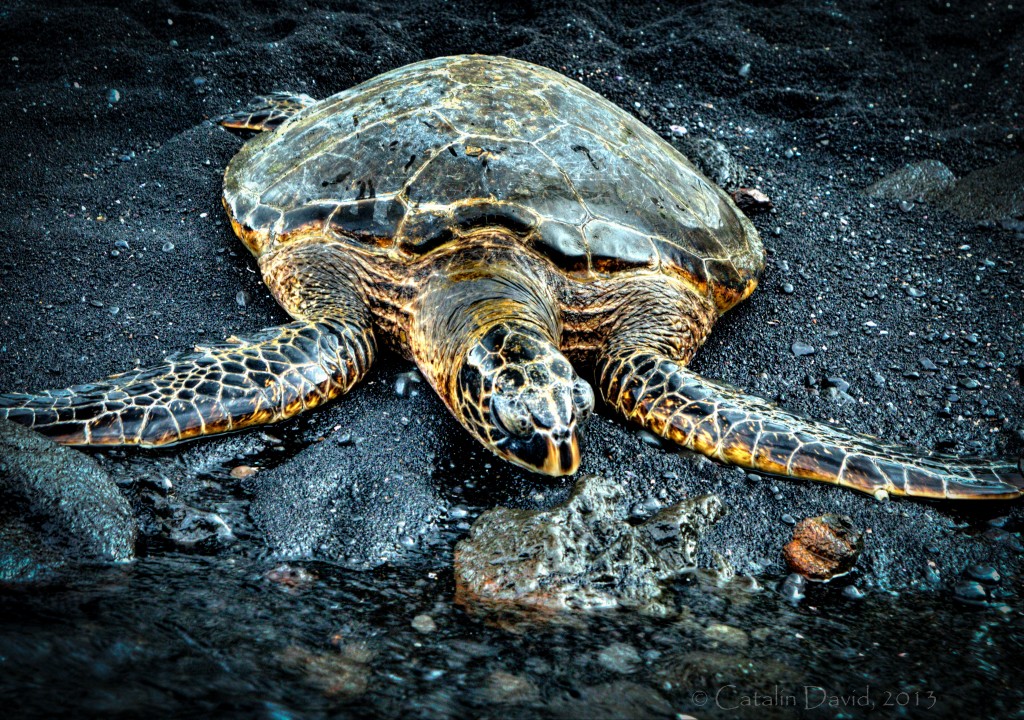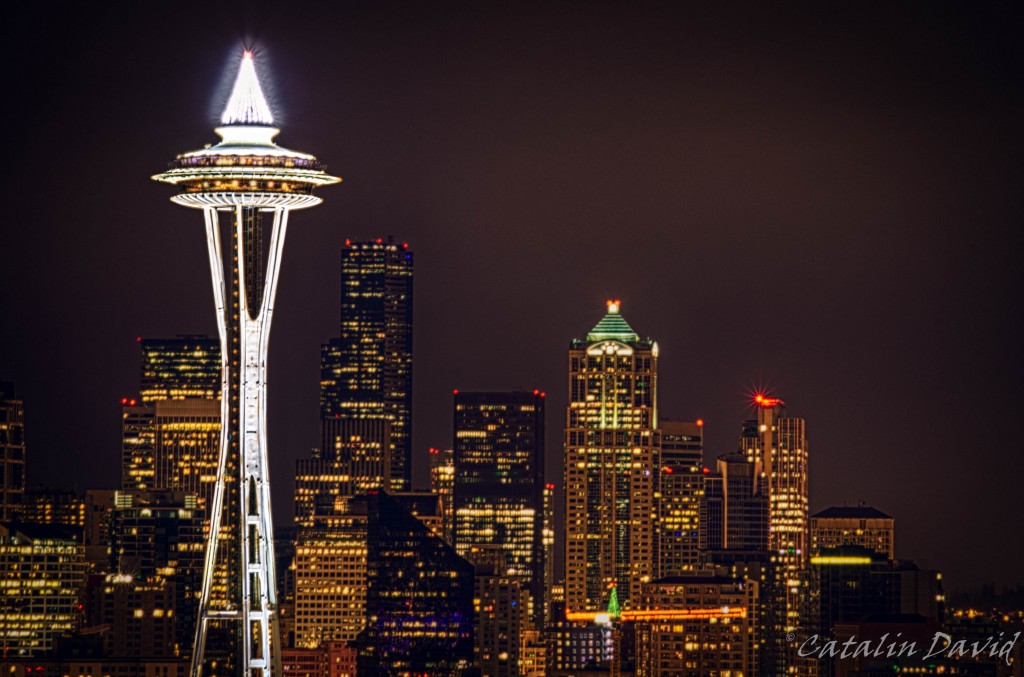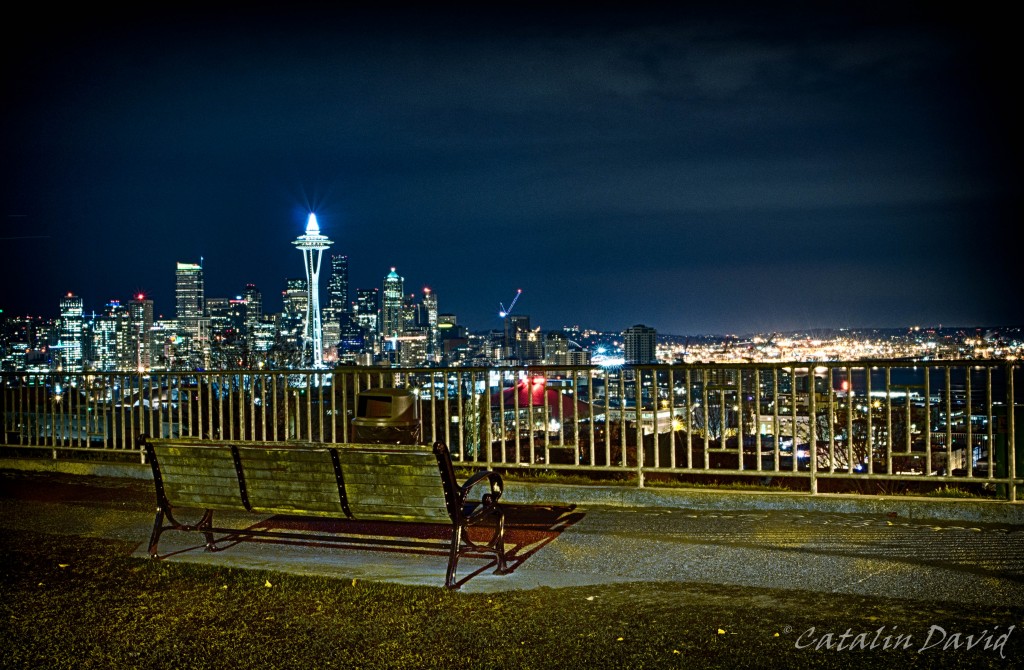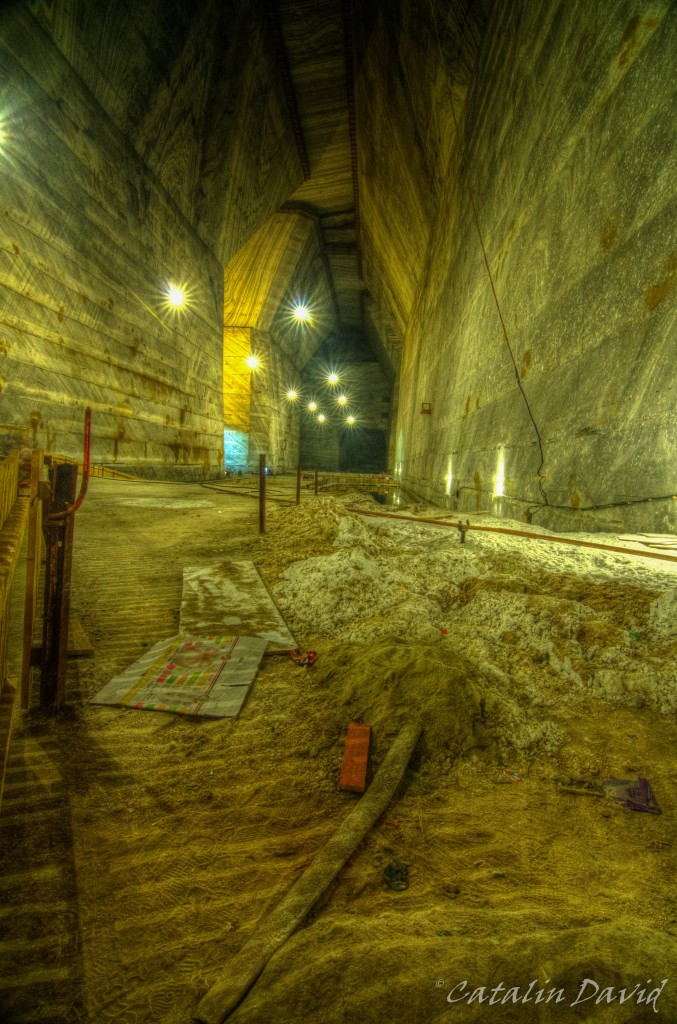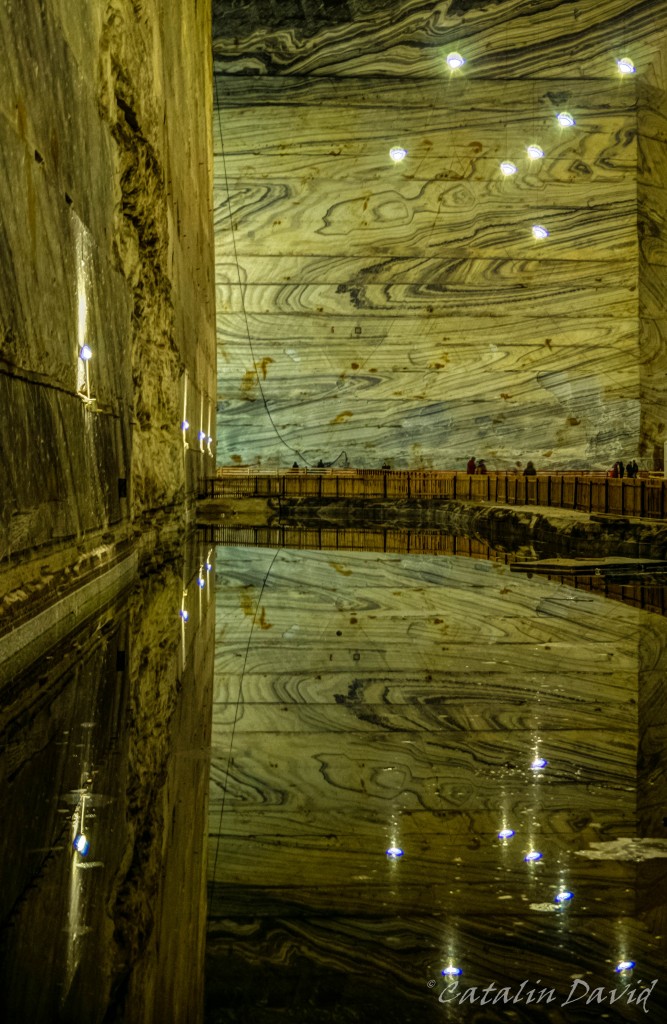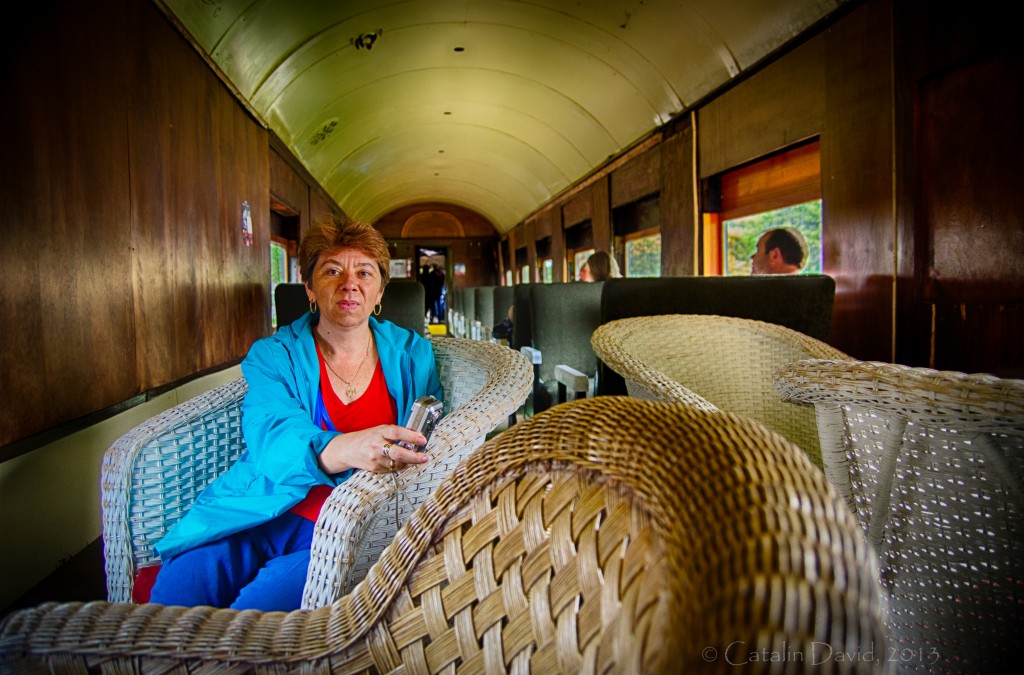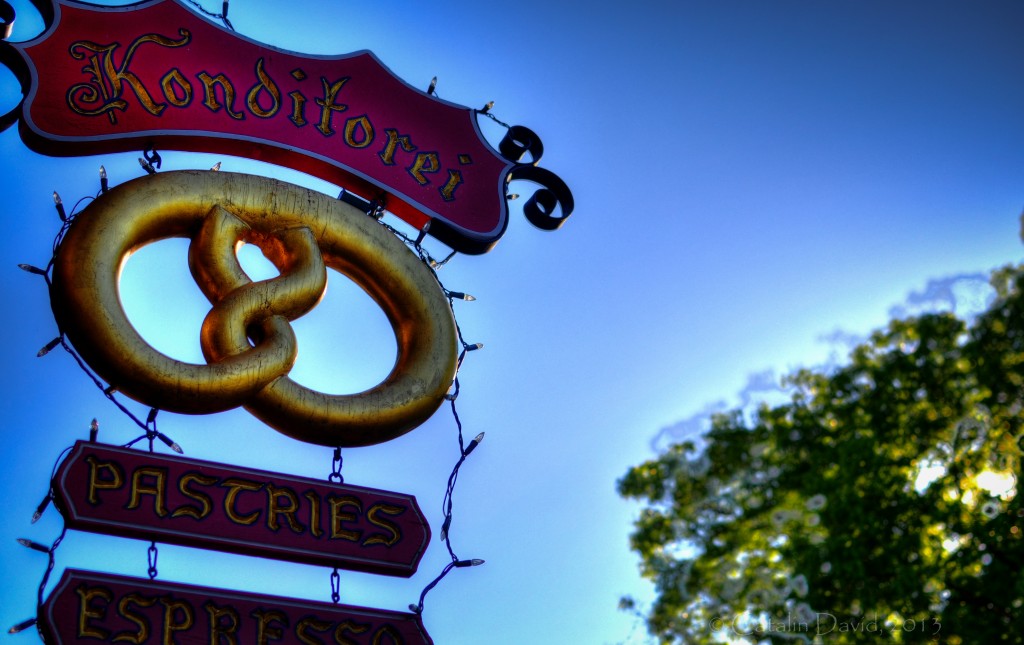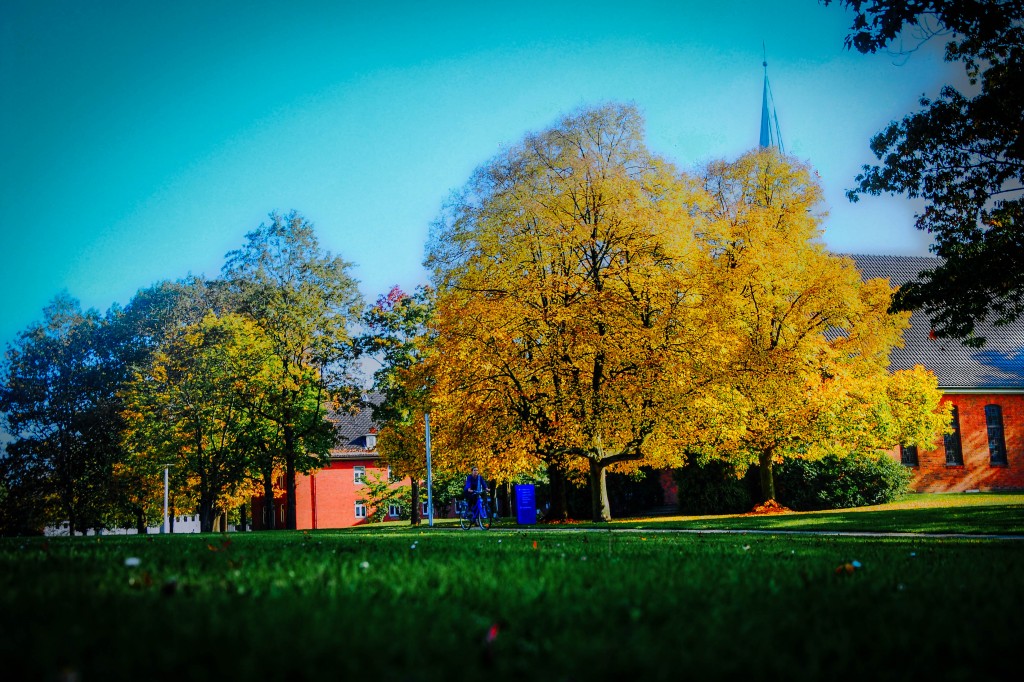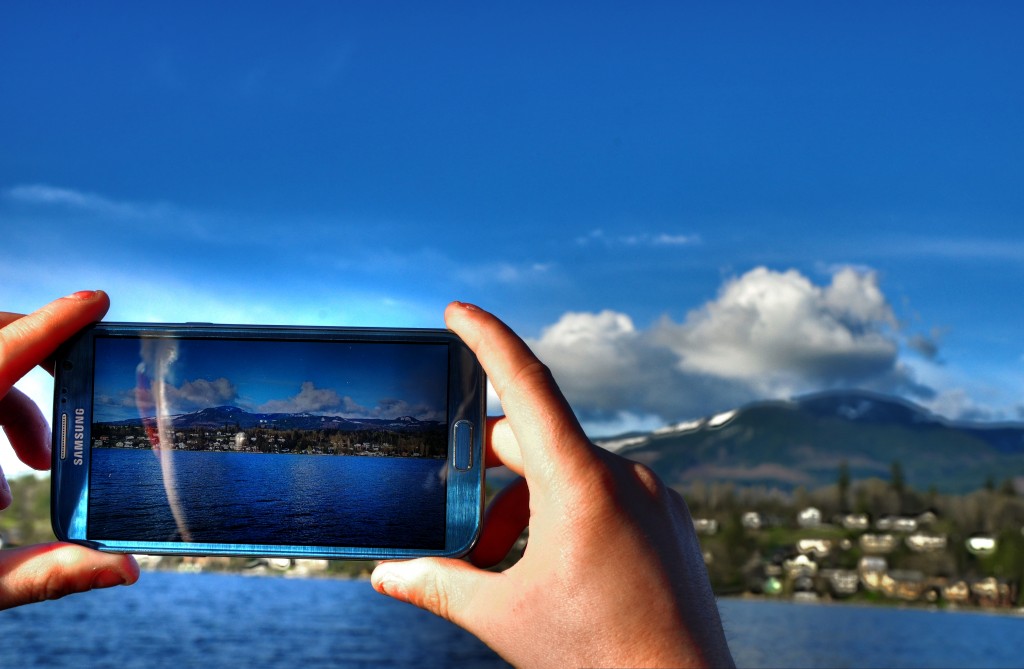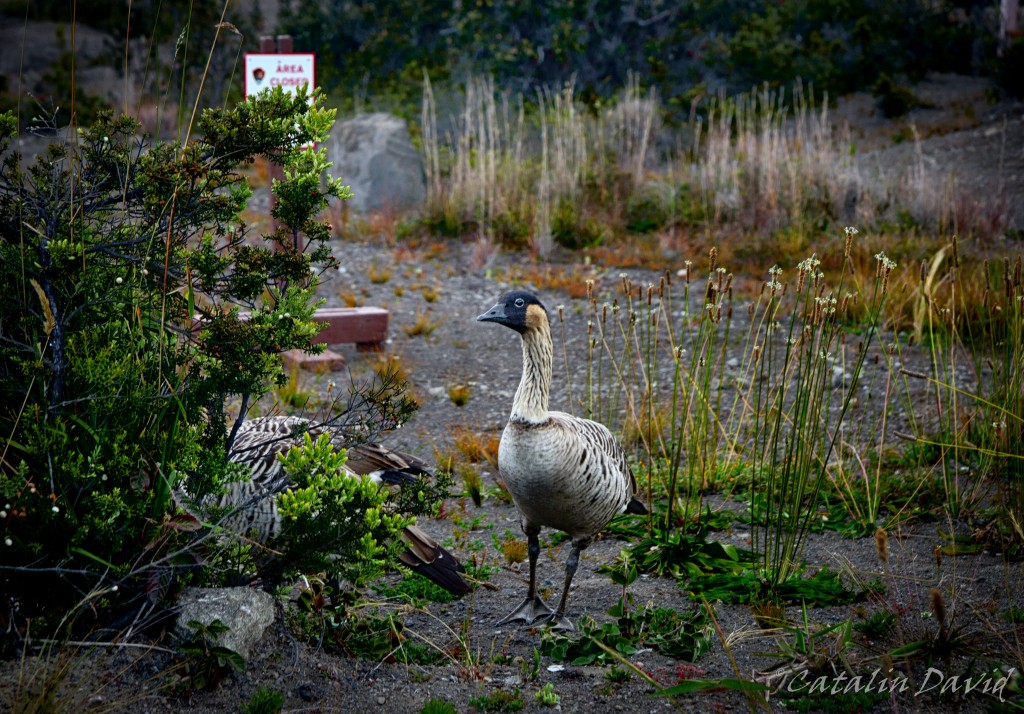
Well, this took a while… I took the pictures about 6 months ago, I started processing them about 3 months ago, had them ready about 1 month ago and since then they have been sitting on my computer, waiting to be published… Also, Happy New Year! Also, don’t forget to click on the pictures to see them better.
If you want me to be technical, this is not day 1, but day 2. On day 1, we (my parents and me) caught a flight from Seattle to San Francisco and then to Kona, Hawaii (on the Big Island – more on that later). About the flight – for me, it always is a bit of a scary feeling when the flight is 5h and it’s a straight line over the Pacific, making water landing the only possibility for survival in case of a disaster (credits to Google Maps for the pic).
This was my second visit to Hawaii – i was at a conference there a couple of years back and the flight experience that I had then was not the best. Then, I was flying Hamburg – London – Los Angeles – Hawaii and on the London – Los Angeles leg of the trip, one of my ears went pretty deaf due to the change in pressure. I had lots of fun at the airport in Los Angeles when, for every question that the TSA / Customs had to ask me, I had to turn my head and usually ask “Can you please repeat that?”. I finally got on to the Hawaii flight, my ears came back to normal once the cabin was pressurized and I was able to get a bit of sleep on that long day. About 2-3 hours into the flight, I can hear one of the flight attendants calling out “Code Blue!!!!” on the intercom and shortly after, 2 other flight attendants rushing to the front of the plane. One of them comes back, with almost a smile on her face and asks “Is anyone here a doctor?”. Luckily, I guess there was a medical conference in Kona on that week since 5 people around me raised their hands. The old lady sitting next to me later on informed me that she found out from one of her friends in first class (word goes around quickly, even on a plane) that someone has had a heart attack and that they had to shock his heart with adrenaline. 45 minutes before landing, the pilot informs us that due to a medical emergency on board, we will descend into Kona faster than usual, leading to my ear blockage again. The rest of the story is fun, but I’ll save it for some other time.
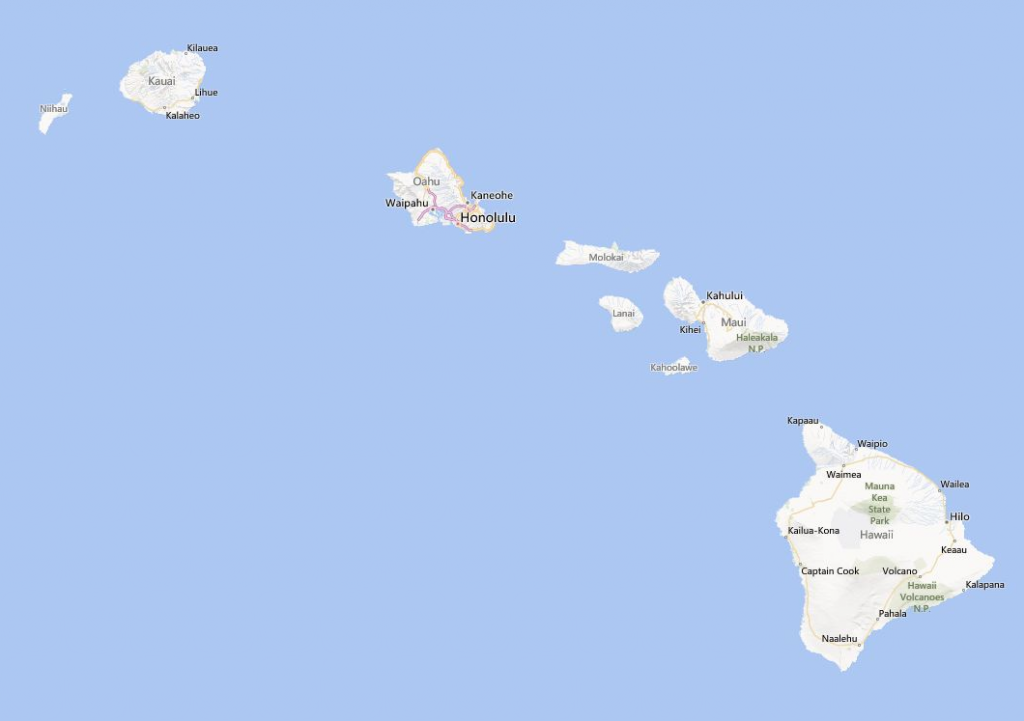
As I was saying, this is the second time that I have been to Hawaii, the second time to the Big Island and the second time in Kona. Looking above (credits to Bing Maps for the pic), you can see the Hawaii islands and the biggest one is “The Big Island” – pretty straightforward right? The other big ones are Maui, Kauai and Oahu – I haven’t researched them that much. All I know is that Oahu is the island that has the capital of the state – Honolulu and that is where Pearl Harbor is and that is where they filmed parts of the Lost TV series. The islands are pretty far away from each other, so for island-hopping, you need to board a plane and take an 1h flight to get to another island (150-200$ return trip).
Anyway, back to the trip. Day 1 was pretty much a long flight SEA – SF – KOA and then we reached Kona in the afternoon and just drove to the hotel, walked around the beach just outside, had dinner and went on to prepare for the next day. We were at a little hotel just in downtown Kona and we had ocean view – a pretty nice place. Also, for the sake of photography – I was travelling light (no checked in luggage for the 3 of us), so I couldn’t take ALL my lenses with me. I ended up taking my Tamron 17-50 f/2.8 and my Tokina 11-16 f/2.8 (and boy, did that come in handy – you will see later) and the tripod. All the photos have been slightly postprocessed using Nik Software (in particular HDR Efex Pro 2) and Lightroom 5. So, second day.
Since I had already been to the Big Island and had researched it 2 times already, I had a pretty good idea of what to visit, the amount of time it would take to get there and back and what to see. For today, the plan was – get up, have breakfast and go see the volcanoes and on the way back, the Black Sand beach and get back to Kona before sunset. And off we went 🙂 . One thing I should mention is that the Big Island is really interesting and varied – it has different climatic zones and different vegetation around the island. It has parts where it almost never rains (see picture above), parts where it rains at least once a day and is mostly cloudy (on the Eastern side of the island, near Hilo), it has 4000+m tall mountains (Mauna Kea and Mauna Loa), it has an area where coffee is farmed (coffee is pretty picky about the climate and Kona coffee is pretty well known) and it has tropical forests. The view above is characteristic to the Western side of the island, North of Kona – you can see solidified lava that was broken down by rain, the blue ocean and all clouds heading avoiding you.
The volcanoes are in the SouthEastern part of the island, in the Hawaii Volcanoes National Park. No, you can not see flowing lava (just to get that out of the way, it’s very unlikely but you might be lucky). Here, in the park you have a tourist information center where you can learn more about the volcanoes, about the area and about what to see while you are visiting. The picture above is of the Kilauea Caldera volcano. To be specific, you are actually looking at 3 volcanoes in this picture (though they are not very clearly defined). The rim of the first volcano can be traced from the lower left corner to just above the double watermark on the photo (yes, I see it now, no I will not fix it). This is the oldest volcano (Kilauea Caldera). In the center of the picture, you can see the smaller rim of the second volcano. This is the Halema’uma’u volcano. This is an active volcano that is solidified at the surface, but 70-150 meters below the surface, there is hot, spewing lava. It has been erupting almost continuously through a single vent, producing the sulfurous cloud that you see in the picture (which will kill you if you breathe it). That single vent started as a 1m wide vent and is now about 300 meters wide. And looking down in it, at 70+ meters, you would see lava. Unfortunately, for reasons of your own safety, your access is not allowed closer to the actual volcano and there is a constant wind taking this sulfur out to the ocean. This shot is taken from the Jagger Museum, west of the tourist information center. Inside, you can learn more about the lava, the volcanoes here and around the world. Pro tip: listen to the local guides telling the stories of Pele and volcanoes.
Walking around the island, you are most likely going to see these weird goose-like birds. They are called “nene” (or Hawaiian Goose) and are the rarest geese in the world and an endangered species. Look, take a picture, but don’t feed them and be sure not to run them over when driving like a maniac around the island.
Between the Jaggar museum and the Tourist Information center, on the side of the road, you will find these holes in the ground with steam coming out of them. Unlike the steam from the volcanoes above (which contains sulfur, highly toxic for you), this is harmless – this is rainwater that is naturally heated up by the lava and evaporates all the way to the surface. The way this works is that the soil is mostly lava – which is very porous (see picture below for a detail). This means that water can infiltrate easily through it, get close to the lava, get transformed to steam and come back up to the surface. The picture is partially decolorized because this is the best I could do to highlight the steam on a bright, sunny day. But I do like the dead-nature aspect that it gives to the foreground bushes.
Next up is the Thurston lava tube. A lava tube is some sort of a cave through which lava flowed many years ago. The characteristics are that it is rather smooth on the inside (not many stalactites) and that it is relatively circular (therefore the name of tube). This lava tube is easily accessible, it is a 30 minute walk through a rain forest. The lighting is kinda bad inside (therefore the need for black and white pictures), but it is a fun walk and definitely an interesting experience to picture that lava flowed through where you are standing. Also, meet my parents 🙂 .
The lighting on the Bis Island is done using low pressure sodium lights (this is the yellow light that shines across the island) – this is because of the observatories on top of Mauna Kea. The sodium light has a lower intensity and is in a different spectrum than normal light and it will influence the astronomic observatories a lot less. Big respect for the science being done there, at the top of the mountain. I still think that black and white looks better – therefore I put Nik Silver Efex to a bit of work to create this.
Once out of the tube, we headed South on the Chain of Craters Road. Down this road, you can see inactive craters (though not as big as Caldera) and walk all the way to the edge of them. Of course, I didn’t want to risk my camera, so I decided to just walk to the edge without taking pictures. Also along the way, you can see different signs with years on them – those signs represent from when the lava that you see on the side of the road has been solidified. As far as I remember, this ranged from 1800 till 1980s. Moving on, we get closer and closer to the ocean and the view is pretty much amazing: desert and water in one picture. The drive is really nice and is worth stopping for a couple of photos and taking everything in.
And you don’t have to be walking on sunshine to have fun – you can be walking on lava!
As we get to the ocean, we can see the Holei Arch – where lava and ocean meet. Or, if you are getting to close to the edge, where ocean and you meet – yes, the cliffs are 10 meters high, but the waves here are pretty big and can always surprise you and take you up for an early bath on your trip. The Holei Arch is actually the endpoint of the drive down the Chain of Craters Road. Still, it is not our end destination inside the Volcanoes National Park. By walking for 10-20 minutes on the closed-for-vehicles road, you will get to the place of one of the latest, easily reachable lava flows.
Road, meet lava. A couple of years ago, there has been an eruption and the lava slowly drifted from the hill nearby and covered 8.7 miles (14km) of the road uniting two villages. One village was partially destroyed, but if I remember correctly, nobody was killed since lava can only travel so fast. The white spot in the middle of the picture is a lane separator for the road and you can see the solidified lava flow in the background.
No s**t, Sherlock! That is where the road should have been. Apparently, they had time to evacuate everyone and put a sign that that the road is closed. Lava did not care for road closures, though…
It gets a bit windy out there. Also, in the background you can see the hills covered with lava as well and you can trace where lava is coming from. Pretty neat.
This is a detail of the lava. I like the sparkling and the different layering of the materials inside. This was our extreme point for the day, so we started heading back towards Kona. On the way back, we stopped at Punalu`u Beach – this is a black sand beach. And it just feels weird – every time I look down and expect to see the golden sand between my toes, I find my foot in a black pile of sand. The sand is pretty rough (though you can find some really nice white / gold sand beaches on the Big Island). One interesting thing about this beach – this is where green turtles come to shore during the day – either to get away from the warm water or to plant their eggs. The one below seemed really tired and for the half hour that we were waiting there, it barely moved (side note: one of the best kind of subjects for photography) even though it was 10 centimeters away from the shore.
Howdy neighbor! I really like the expression of the turtle in the back of this picture (it is the same turtle in the picture above, so proof it was alive) – what’cha lookin’ at, punk?
On our way back to Kona, we were treated with some clouds, making watching the sunset impossible to watch – but at least this picture of the rays of light going through the clouds was possible.
Over and out (and off to processing day 2),
/cd
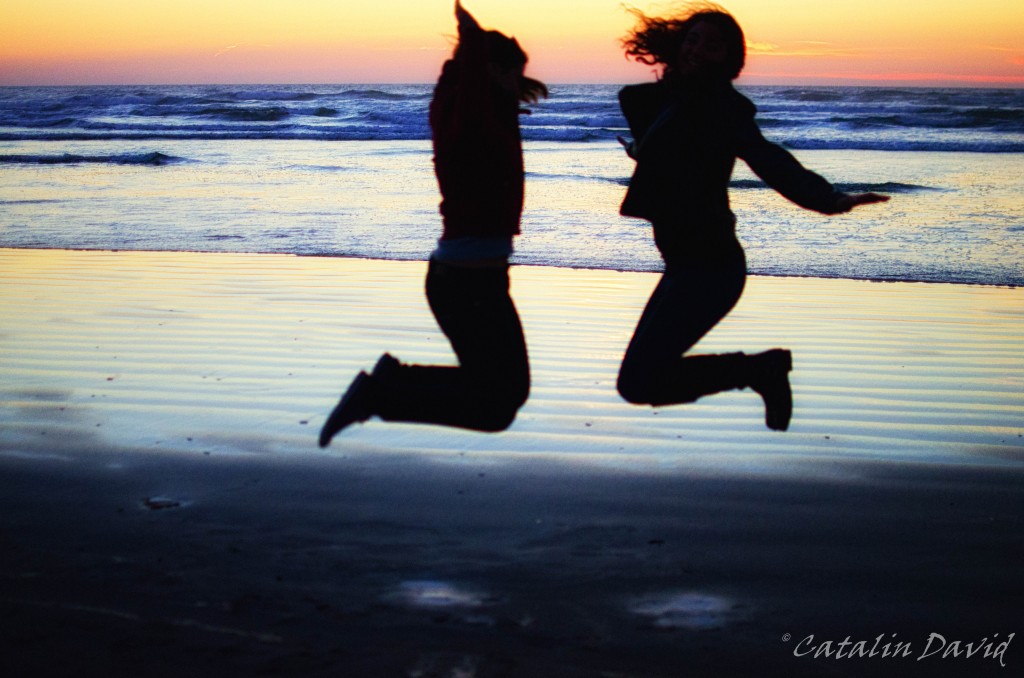
On a crazy weekend, some friends and I decided to take a trip south and visit the City of Roses, Portland in Oregon. On the way back from Portland to Seattle, we decided to take a bit of a detour and see the seaside. In the city of Seaside – great naming there, not confusing at all. We barely caught the sunset, but it was amazing…
And since sun and sea always call for something crazy…
The sun has set on this weekend, time to say good night!
/cd
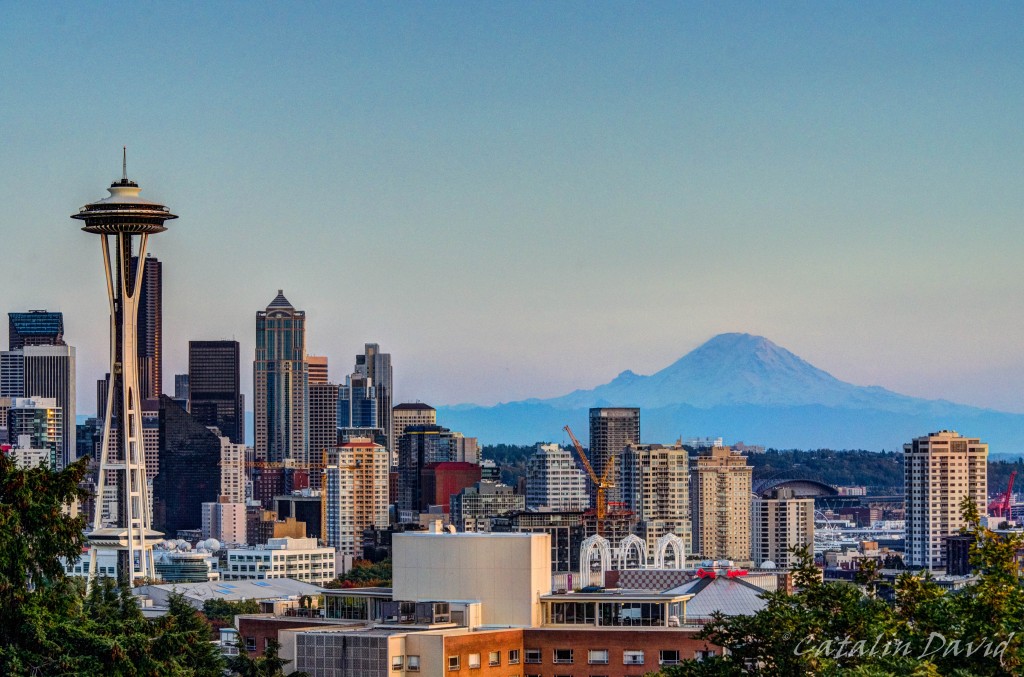
It’s been a while since I actually posted since life and work and summer caught up with me. But, last night I got home before midnight and in a flash of boredom, I decided to take a trip to one of my favorite places in Seattle – Kerry Park.
First and foremost, the weather is a bit odd in Seattle right now – in the sense that the temperature was around 20F (-5C) and it’s been dry for a couple of weeks now, while “usually” we are treated with higher temperatures and a bit more rain (“usually” because I only experienced 1 year here and that’s what I expected the weather to be like). Also, it’s almost Christmas time, so the Space Needle gets “decorated” with Christmas lights.
Even in this weather, Kerry Park was quite popular past midnight. When I got there, there were about 10-15 people present, some of them just hanging around, admiring the city, while others were enjoying the view and green “stuff” from the comfort of their running, heat producing car.
I like the view from Kerry Park at night – you can see the city, close enough if you reach out your hand to grab it, but at the same time far enough so you can admire it peacefully. And it’s not just me thinking this – a nice house on the hills of Queen Anne with a view of Downtown Seattle starts at about 1 million USD (ouch!). In addition to that, there is the harbor with many lights (to the right in the picture below) and the ever-running ferries between Downtown Seattle and Bremerton and Bainbridge Island (I like ferries, but the seagulls that usually populate them and me don’t go along well).
One more thing I should mention about Kerry Park is that I don’t find it to be a real park – it has a surface of 1.26 acres (to put this into perspective, an ‘merican football field is about 4 acres). But this park is mostly appreciated and preserved for the view of Downtown Seattle and the Puget Sound. So you can sit on the bench and admire the city as long as you want…
Last but not least, the view from Kerry Park is impressive at night, but it’s even more impressive during the summer, at sunset on a cloud-free day (and we get plenty of those during the summer). You get to see Downtown Seattle with the Space Needle, Columbia tower (the tallest building in Seattle) and in the background, the absolutely amazing view of Mount Rainier at sunset. I know that the image is pretty cliche, but I was there, saw the sunset and was able to take the picture.
Off to bed now. Take care!
/cd
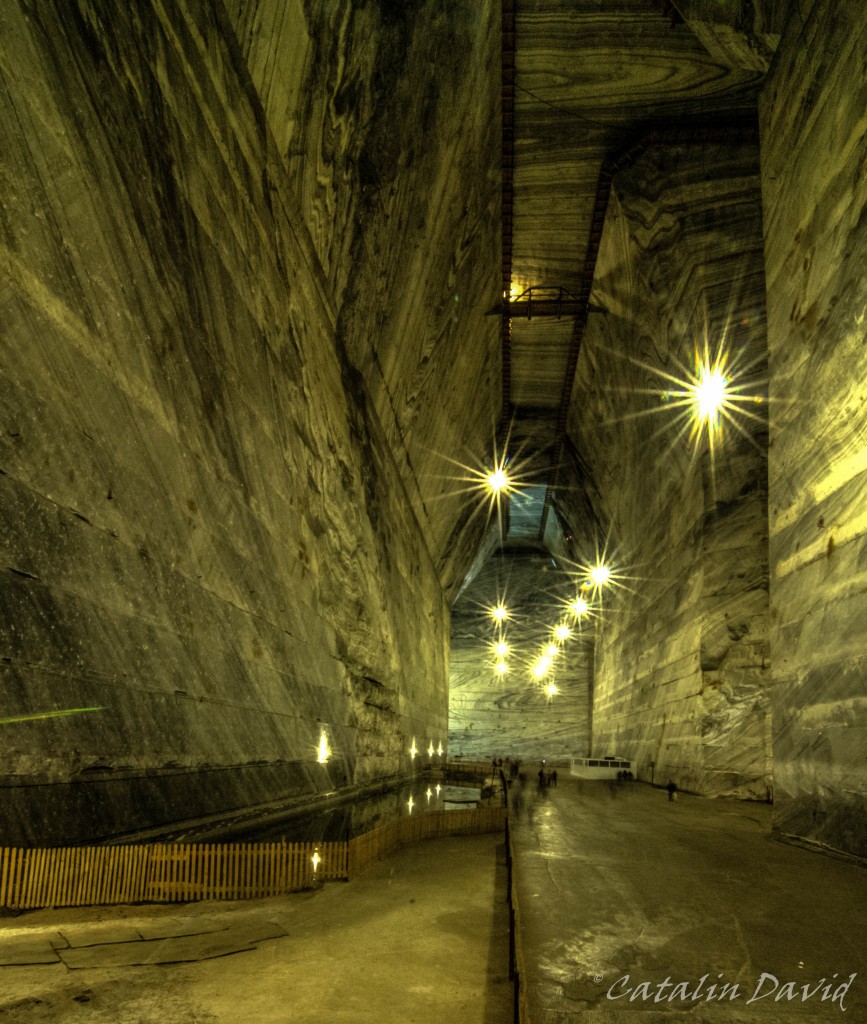
I know it’s been a while, but here we go again… I am taking a break from the last summer story for some sort of “Breaking news”. I have just visited a salt mine close to Bucharest: Slanic Salt Mine.
Buried a bit more than 200m into the ground, the salt mine makes up for a cool nuclear apocalypse hiding place, especially since it’s accessible by car from Bucharest in less than 2 hours. The salt mine has not actually been a salt mine any more for 43 years. The salt mine named Unirea (Unification) has been in full use between 1938 and 1970. The salt mining was done in a top-down manner, starting at about 170m from ground level and then the mining kept slicing the ground underneath (2.2m tall slices). In 1970, the (pure) salt ran out, so the mine was converted in a touristic attraction.
The first impression once you get there, past the usually long queue on the weekends, is the elevator. The elevator was built around 1970 and it’s the only way to get in and out of the mine (at least that is what the posters say). There are more exits from the mine through which the salt was being carried to the surface, but those are now locked and in a very bad state. Back to the elevator, based on my experience with it, it’s the kind of place where you can expect a screw to malfunction and take your life. The descent to the bottom of the mine (205 meters) takes about 90 seconds and on the way to the bottom, there are 2 exits from the elevator shaft (besides top and bottom): 1) there is a hall where there is no air draft. This hall is used for international contests of Indoor Model Aircraft Flying and is not accessible to the public. 2) the other exit is at the top of the halls that tourists can visit. This is used by the employees to check if there are any leaks or dangers of the ceiling falling on tourists (shit happens!). This is also not accessible to the public.
Once inside, everything is different. You are 205 meters under ground in a hall that is 50 meters high. Needless to say you feel tiny and the view is breathtaking. For the breathtaking part, the “weather” doesn’t help either. Regardless of the conditions outside, the temperature in the mine is constant at 12C (50-55F) and the air pressure also stable at 730mm Hg. The humidity in the air is the only one affected by the outside world, with it being usually 10% less than outside.
So what madness drives people here? Not much, just the ability to stay in a salt-concentrated environment and breathe that air. The salt in the air is a natural remedy for some respiratory problems and there are people that actually come and sleep here during the day. What else besides sleeping? Walking for one – it takes about 30 – 45 minutes to do a roundtrip of the mine, but they have some extra activities. There are some bikes, basketball hoops, a small football court, table tennis tables and, of course, many walls against which you can train in tennis, volleyball etc.
There are a couple of lakes inside produced by infiltrated water, but not deep enough to feature gondola rides. In general, people come here for the experience of being in a salt mine and for the clean, salty air.
If you are a visitor, worth noting are some salt sculptures of Decebalus (picture below), a king of Dacians who fought the Roman Empire, and Trajan (who also has a sculpture in the mine), emperor of Romans who fought against Decebalus. Just nearby is the sculpture of Mihai Eminescu, one of the top Romanian writers.
Once you’re done taking salt air into your lungs, it’s time queue again for the elevator up (times for the elevator are every day except Monday 9AM – 3:45PM). If you are around, make sure you visit what’s left of the Salt Mountain and (what’s left of) Bride’s Cave, both in the city of Slanic.
Over and out,
/cd
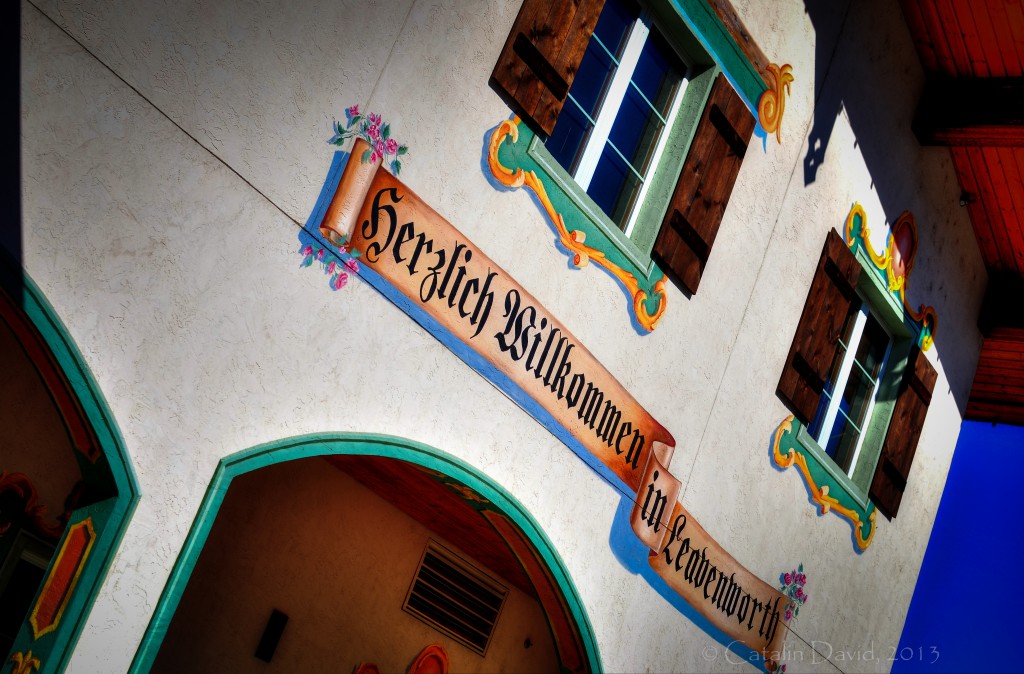
Hello, World!
After a couple of days in which I enjoyed the privileges of having my parents around – read: dinner prepared, waiting for me, everyday after coming from work, breakfast prepared in the morning, we decided to head out on one week-end around Washington state.
First stop: Snoqualmie Falls. Even though it was end of June – beginning of July, the weather managed to upset us a bit – it rained for a couple of days in a row. Nothing unexpected, but the weather was pretty bad for a day trip. Nevertheless, a day trip where you can see stuff is a lot better than staying at home.
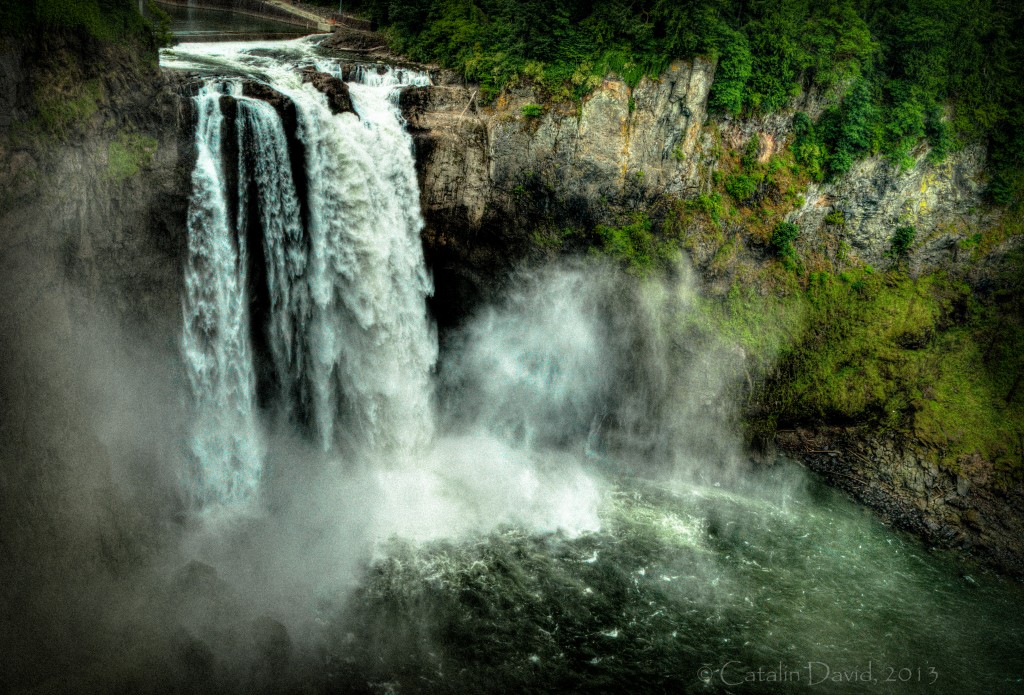
Snoqualmie Falls is located in the city of Snoqualmie, about 30 minutes by car from Bellevue via I-90. The falls is spectacular, with a height of 80 meters. But, the more interesting thing about this falls (at least from an engineering perspective), can not be seen in the pictures: at the base of the falls is the first completely underground power plant. This power plant, built in 1898, is dug into the ground at 82 meters (the height of the falls) and has been featured in the Twin Peaks TV series. The power plant is still operational (it was actually extended and there are 2 power plants now) and they are “responsible” for the low debit of water that actually reaches the falls (even on rainy days).
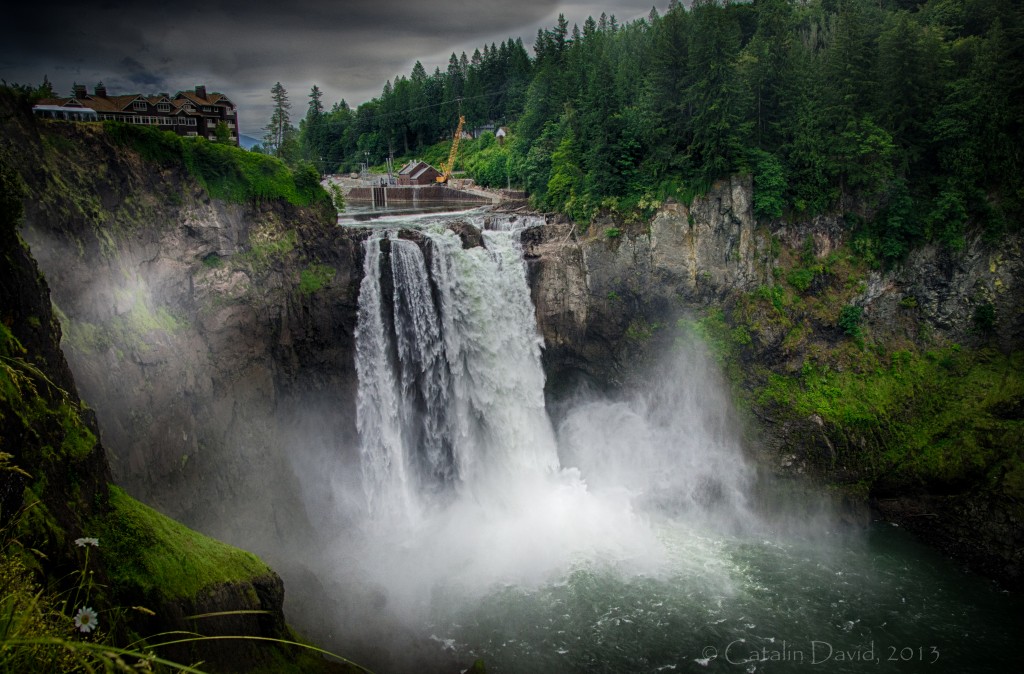
Another touristic attraction for the city of Snoqualmie is the Northwest Railway Museum which has a train that runs on the route: Snoqualmie – North Bend – Snoqualmie – Snoqualmie Falls – Snoqualmie (the start point – Snoqualmie – is half-way between Snoqualmie Falls and North Bend). The train trip was very … bumpy, let’s say. It was slow and bumpy up to the point that I was actually wondering if this train passed the space-time continuum and came straight from my childhood in Romania when it took 3-4 hours for a 60km trip from home (Bucharest) to my grandparent’s city (Oltenita). But enough with complaining – the carriages were very old and tried to reproduce as much as possible the atmosphere of using them. For example, the one below was from a train from the beginning of the 20th century and at the very end of the carriage, there was a barber seat. Honestly, if the quality of the tracks was the same then as it is now, you really really REALLY had to trust your barber to shave off only hair and not skin. The train offers an interesting view of Snoqualmie Falls (from the top), as well as a view of the Snoqualmie river.
Even though it was not the brightest of days, I decided to continue the journey with my parents to the city of Leavenworth. Leavenworth is a very small city (2000 inhabitants) in Washington state on the Wenatchee river and it has one special characteristic: the entire city is modeled to look like a Bavarian city. After living in Germany for 5 years, this feels a bit like going back in time. Herzlich Wilkommen, indeed!

They even have a nutcracker museum (not that big, but the old lady will tell you about her and her husband and how they came to the US).
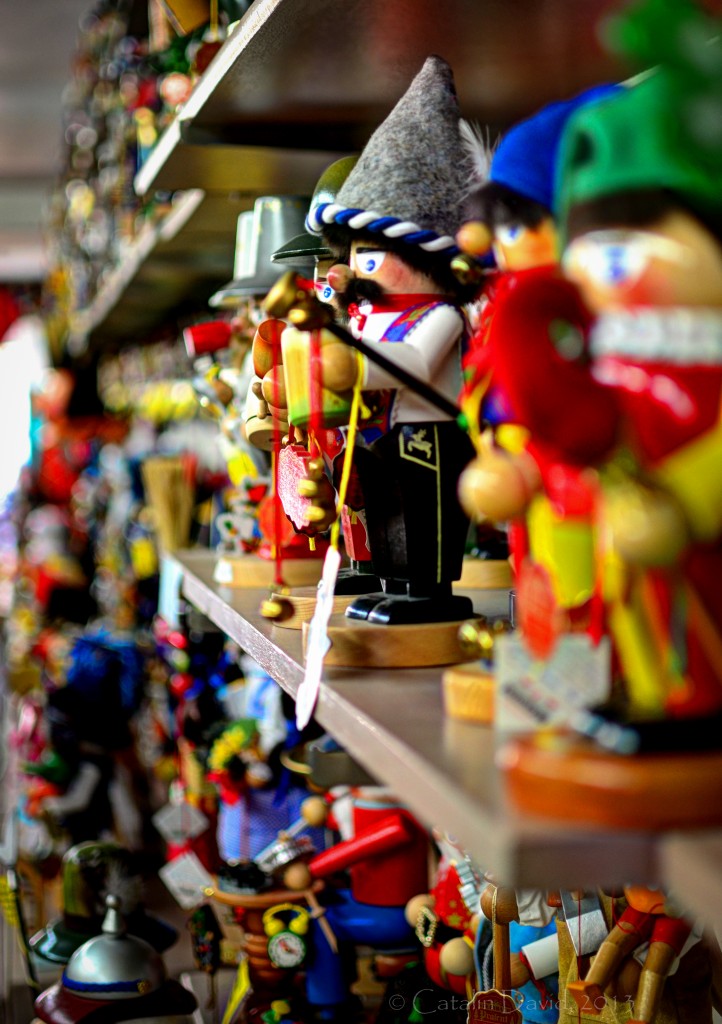 It’s a nice city where you can have some real German Wurst and some good German beer. There isn’t a lot of stuff to do around here, but to just sit back, relax, have some good food and beer.
It’s a nice city where you can have some real German Wurst and some good German beer. There isn’t a lot of stuff to do around here, but to just sit back, relax, have some good food and beer.
The road back was on a Sunday evening on US-2. Unfortunately, there was a 30 km traffic jam since everybody was going home to Seattle, but at least we got to experience the size of a traffic jam in the US.
Over and out,
/cd
I just came back from a pseudo-pub-crawl, so take all my words and wording with a grain of salt (and a bit of lime afterwards, just like a tequila shot). Anyway…
Secret of the trade: presentations should start with a joke or something to get the people hooked. My take on it: Europeans think that 200km is a long distance and Americans think that 200 years is a history (managed to insult about 3/4 billion people with this). Yet, the fact that amazed me most on this trip that I took was the amount of stuff that was built in the United States while many things that should have damaged the economy were happening (e.g.: WW1, financial crysis, WW2). And then, you take a look at Romania and you take a look at the United States and realize that Romania suffered throughout the 20th century, while the United States have (almost) continuously flourished. That made me realize that most of the great “achievements” of Romania either were done before the 20th century or, if in the 20th century, they were not that great. As for the US, you can win wars by funneling just the right amount of resource at the appropriate time and keep your economy stable. Anyway…
The story is in part about my experience of Seattle and also of my parents’ visit which starts in Seattle, where they arrived after their first inter-continental journey. Of course they were tired and had lots of luggage, but I was happy to see them and they were happy to see me. I was even more excited to see them when we got at home and they pulled out a bottle of TUICA (or RAKIA or plum brandy) out of their bags and we got to celebrate with Romanian goodies. After that, we took a stroll around Seattle by car. Of course, I forgot to take my camera with me, so the picture taking was reduced to my phone (which, honestly, did a pretty good job). First we went to Kerry Park. This is, in my opinion, one of the first places that you should see such that you can capture all the breadth of Seattle, from Queen Anne and Capitol Hill all the way to Alki Beach. While you are here, you can get a view of where things are in the city and it will help you get a better understanding of where the Space Needle is, where the Columbia tower is and pretty much what’s in between. If you are really lucky, you can also see Mt. Rainier there in the background (unfortunately, I was not that lucky on that day). The view is impressive and it’s not just my opinion – the price of a 1-bedroom facing the city is very high in this area. Just take a look here – I would love to wake up to this view every morning (please remember to click on the image for a bigger size):
We then took a trip to Alki Beach (furthest to the right in the picture above). This provides a whole new, contrasting perspective on the city. While at Kerry Park you can experience views of the city from above, Alki Beach is actually at the sea level and you can see the skyscrapers and the city from afar. The view is particularly spectacular at night when the whole city is lighted up (this is a picture from February – it took a bit of shivering on my side to get such an exposure, but well worth it, as always).
One last perspective of Seattle is from on top of I-90 (Interstate highway), at the top of Rizal Park. The view of the skyline is similar to Alki Beach, but you are now on top of a hill again (like Kerry Park). The difference that I feel is that you are now more “engaged” into Seattle, you can see the people driving, you can almost feel the heart of the city beating.
Time is creeping in on me and I have to get up in 6 hours, so I will stop here.
Out for now,
/cd
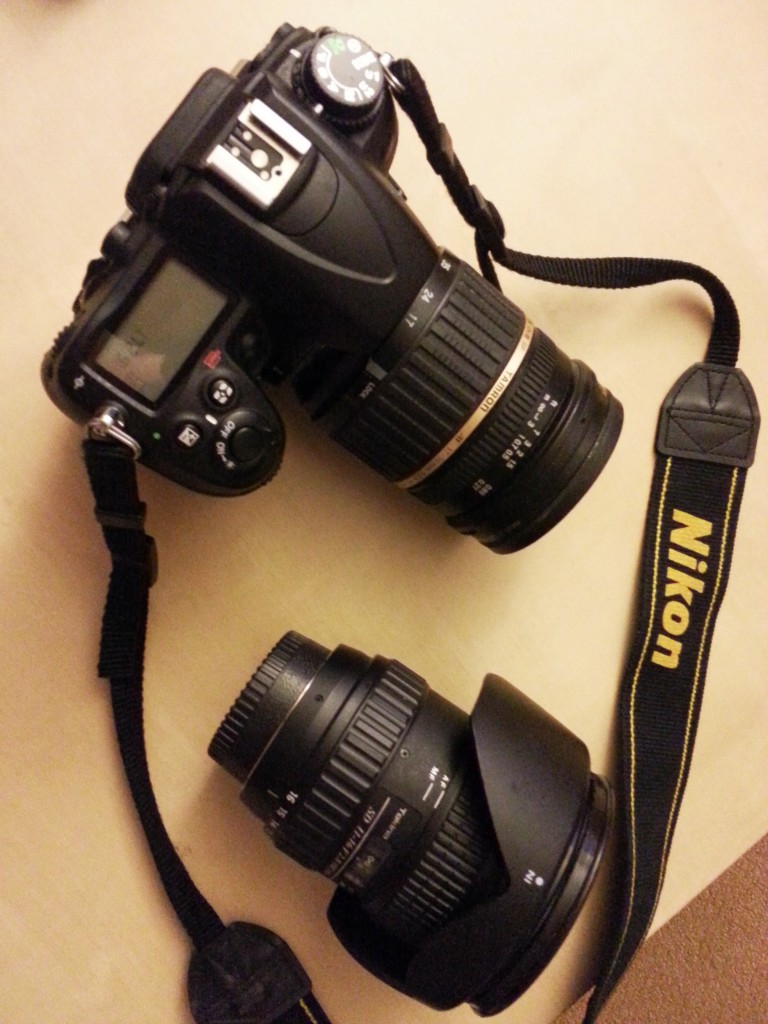
It’s been a while since I last wrote here… and for a good reason: for the past couple of weeks, I had some guests – my parents, coming to visit me and their first time in the US. Therefore, my bed was “invaded” (I actually offered to sleep on the couch), my kitchen and in general my life – I don’t complain though, my parents’ cooking skills are amazing and it was all for a good purpose. It had been a while since I last saw them (6 months) and it was their first time to see where I am and what has become of me out of their influence, 16 hours by plane and 10 time-zones away from them.
Since my vacation days are numbered and wanted to make the most of my parents’ time here, I decided to take some trips with them and experience the US. First, we went to Hawaii (Kona on the Big Island). I had been there before, but that place is so amazing it deserved another visit from me. On our way back (via San Francisco), we decided to skip the last leg of the trip back to Seattle and take a short 3-day trip to Las Vegas (actually, Vegas was only about 24 hours, more on that later) and only after that come back to Seattle (some of us have to work). Finally, on their way back home, I decided to escort them to New York and experience the Big Apple (more impressions on that later as well). Besides these trips, we also had some time to visit places around Washington state (for some reason, I didn’t take that many pictures in WA, at least not with my camera – I took some with my phone).
Now I’m back. Some statistics: I was away for about 2 weeks in total. I took about 1700 pictures, most of them for HDR purposes (3 exposures, so maybe I have some 600 pictures in total). I shot both RAW+JPEG fine at full resolution (16.2MP) and managed to use about 36GB for RAW and 15GB for the JPEG. Even though my camera (Nikon D7000) has two SD card slots for recording the images, the performance penalty in shooting RAW was very high – the buffer would be filled after 6-9 exposures and you would have to wait until those exposures are written to the card.
Side note: It is a bit shocking to me to see how much space I have used with these pictures at a reasonable resolution (to be frank, on the high end) and can’t dare to imagine what would happen with a Nikon D800 that has over twice the resolution (36MP).
The faithful servants in this trip (besides the camera) were two lenses: Tokina 11-16 f/2.8 (with UV and CPOL filter) and the Tamron 17-50 f/2.8 (also with UV and CPOL filters) and my tripod. I was on the fence with my 70-210 f/4-5.6, but I decided to pass on it due to the added weight and size restrictions (I only had a carry on luggage on the trip). I decided to also pass on my other lenses, the Nikon 35mm f/1.8 and 50mm f/1.8 as I am not sure I would have taken any good portraits and, even though they are small and almost weightless, the overlap with the 17-50 gave me no extra reason to bring them with me.
Off I go now, to edit some pictures, run around the house and… why not, actually sleep. I leave you with a low-light, low-quality picture of my tools.
I was just thinking today that some people are graduating. The mighty class of 2013. The leaders of tomorrow… What would I say to them? I would show them the picture above… and make them remember all the good, bad and annoying moments of their life at the university because they’ll miss it once they get into “the real life”.
About Jacobs University a bit — it’s a small, private university in northern Germany, with a student body of about 1500 people. It tries to keep the high standards of top-rated American universities in terms of teaching and student life (with students from over 100 countries), while shrinking the period of study to 3 years for a bachelor. An interesting thing about the university is that it is reusing the building that belonged to an Allied Army base after World War 2 – if you don’t believe me, take a look here: http://imgur.com/a/F6E76
This specific place on campus is called the Interfaith House and used to be a church in the old army base, but due to the multitude of cultures and gods hanging around the university campus, they had to remove all Christian / Catholic signs.
Off-topic:
Washington state is pretty amazing! Everybody thinks about Seattle and the fact that it rains a lot, but I like it. I guess the rain in the other days (which is not that much, BTW) makes you appreciate all the more the sunny days.
About the trip:
I went with my friend Cipp (a.k.a. Ciprian or Tais) last weekend around Washington state, more specifically in Mt. Vernon and Skagit Valley. It is tulip season there and we’ve been wandering all morning and noon around them. In the afternoon, we decided to go to the top of a nearby mountain and take a couple of shots of the sunset with the tulips and the entire valley. Unfortunately, the path to the peak was closed for cars and going 2 miles by foot would have meant missing the sunset. So, we decided to go to the Big Lake nearby and admire the nature there. Everything was so calm, it was full of houses lakeside and with the sun behind us shining upon the mountain across the lake, we decided to take some pictures… More on the story in another post.
About the picture:
3 pictures (-2,0,+2 EV): 1/320 , f/9, ISO 400 @ 34mm on my Tamron 17-50 f/2.8
Then, these 3 pictures were tonemapped using Photomatix 4 and then saved as a JPEG. I recently switched laptops and didn’t install Photoshop again, so this is pretty much straight out of Photomatix. Unfortunately, I didn’t save the tonemapping information.
Transforming the picture to HDR made it possible to get highlights from both the phone and the background picture, within normal exposure limits.
Issues:
Should get a better CPL filter or adjust the composition to eliminate the face from the phone.
/cd
Time to start writing… Or at least posting (hopefully nice) pictures.
